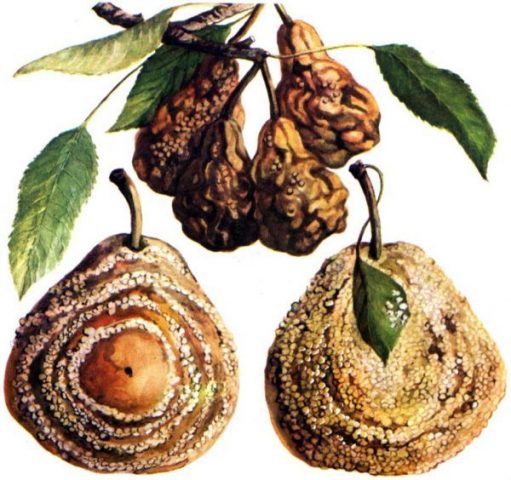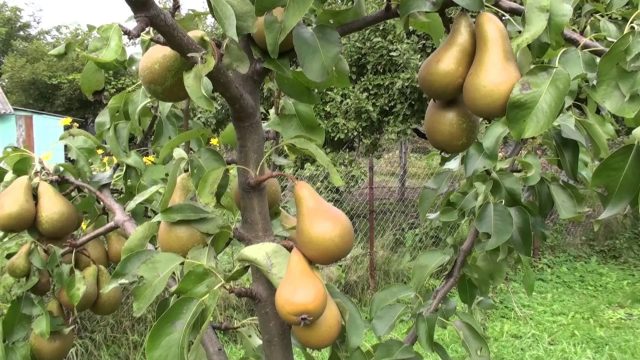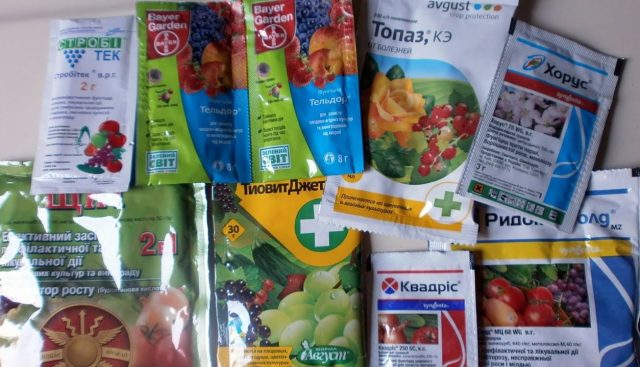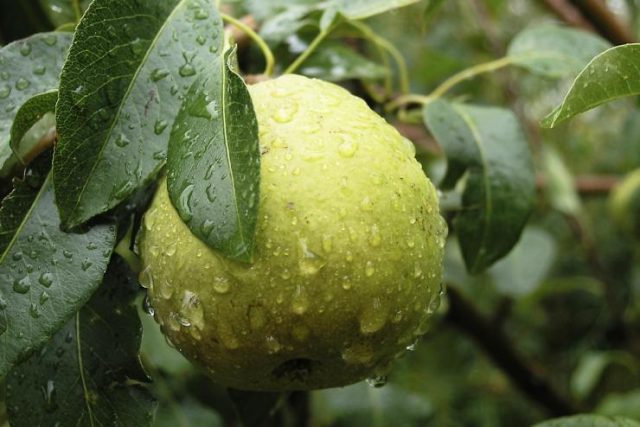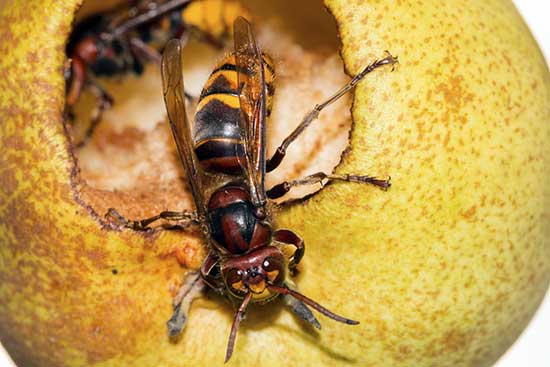Content
In terms of its biological properties, a pear is close to an apple tree, but more thermophilic. She lives up to 130 years and is considered a long-liver among fruit trees. It is all the more offensive when pears rot on the tree, crack, turn black or fall off. This can destroy the crop, at best - significantly reduces it and makes the fruit unstable. Housewives cannot process spoiled pears, and farmers lose their profits.
Why pears crack and rot on wood
Most often, rotting of pears on a tree causes moniliosis. But this is not the only reason for crop spoilage. Insects can "work" on fruits, proper care of the garden is of great importance, and no one canceled other diseases. For example, the cracking of the pear fruit occurs due to scab.
Scab
One of the most common diseases of pome fruit crops is scab. If this microscopic fungus begins to develop in the spring, pear leaves first of all suffer, they turn black and fall off by the middle of summer. Most of the ovaries die.
But often trees are affected in the middle of the season. Then the fungus affects the leaves less, but the fruits first become covered with dark spots, then crack, acquire an ugly shape and stop developing. If an infection gets into the wound, the pears not only burst, but also rot. Often it is the scab that precedes the disease of the tree with moniliosis.
The fungus is widespread in all regions where pome crops grow, it affects stone fruits less. Damp warm weather contributes to the spread of the disease.
Bends overwinter on the bark of affected shoots and infected leaves. As a preventive measure, standard sanitary measures are recommended, for treatment - multiple spraying with copper-containing drugs and drugs created on the basis of difenoconazole.
Moniliosis
But the most common and difficult to eliminate reason why pear fruits crack and rot on a tree is moniliosis. The disease is caused by a fungus of the genus Monilia, it manifests itself in two forms:
- fruit rot striking fruits that have already formed in the middle of summer, poses the greatest danger to pome crops;
- monilial burn of young vegetative organs: leaves, shoots, flowers, ovaries - manifests itself in spring and causes the greatest damage to stone trees.
The external manifestations of fruit monilial rot become noticeable after pouring the pears. Small brown spots appear on the fruit, spreading very quickly and covering the entire surface. Further development of the disease can follow one of two scenarios:
- High humidity encourages the development of spores. On pears, yellowish or grayish pads appear, arranged chaotically or in circles - this depends on the type of fungus of the genus Monilia that has affected the culture.
- At low humidity, spores do not form. Pears dry and turn black, but they do not fall from the tree.
Sick fruits, upon contact with healthy vegetative organs, infect them, if contact occurs with a branch, dark oval spots appear on the bark. When they accumulate, the tip of the shoot dries out.
The mycelium of the pathogen overwinters on mummified pears, fallen leaves and affected branches. As soon as the temperature reaches 12 ° C, the mushroom begins to grow. At this time, the causative agent of molinial burn is activated, fruit rot conidia need more heat - 24 ° C.
The infection is spread by the wind, insects, along with falling rain drops, through the touch of people and animals. Infection of a pear with a scab opens a real gateway for moniliosis. It is on this crop, thanks to the thin peel, that both infections affect the fruit at the same time. At first, due to the scab, the pear cracks, and rots on the branch due to moniliosis.
How to save the harvest
Depending on the degree of damage to pears, 20-70% of the yield is lost due to moniliosis. Infected, but plucked at the initial stages of the disease, fruits are poorly stored and quickly begin to rot. It is difficult to deal with moniliosis, it is impossible to prevent it, since spores can even be carried by the wind. Spraying is effective only at the initial stage. Severely affected trees need comprehensive measures - a combination of chemical treatments, pruning and sanitation.
Agrotechnical techniques
The plant protection system can only work with the correct application of agricultural techniques. The most important are:
- the correct layout of the garden - the free placement of trees will make it difficult to transfer infection from one plant to another;
- planting varieties resistant to moniliosis - now they are quite enough to satisfy the most fastidious gardener;
- timely pruning of trees - the removal of dry, diseased and thickening branches not only destroys infected vegetative organs, but also makes processing more effective;
- adherence to the feeding schedule: correctly selected doses of phosphorus and potassium make the leaves and peel of the fruits stronger and more elastic, infections are more difficult to penetrate into them than into flabby and weakened ones;
- digging the trunk circle in spring and autumn not only saturates the soil with oxygen, allows the tree to better absorb nutrients or water, but also destroys fungal spores that winter in the soil;
- sanitary measures - removal of dry leaves and mummified fruits from the site, on which the mycelium of monilial fungi hibernates, prevents the development of the disease in the new season;
- autumn moisture recharge allows pears to winter better, because of this, their tissues become stronger and less permeable for infection.
Chemicals
Fungicide treatment is most effective in the early stages of the disease. If moniliosis strongly affects a tree, pears burst and rot in rainy weather, or turn black and dry in the absence of rain for a long time, you will have to cut off the infected fruits in order to preserve part of the harvest. Complete protection from disease looks like this:
- before budding, the pear is treated with a copper-containing preparation;
- on a pink cone (during the extension of peduncles) and immediately after flowering - with such fungicides as Horus, Skor, or other drugs based on difenoconazole or cyprodinil;
- when the pears begin to pour, two more fungicide treatments are needed with an interval of 14 days;
- after leaf fall - spraying the tree with copper-containing preparations in high concentration.
If the pear is severely affected, not 2 treatments may be required in the summer, but more. They should be carried out at intervals of at least two weeks. The last spraying should not be done later than 15 days before harvest.
Biological agents
Protecting pears from fruit rotting by biological methods does not cancel the treatment with copper-containing preparations at the beginning and end of the season. In the middle of the growing season, to combat moniliosis, you can use:
- Fitosporin-M;
- Alirin;
- Mikosan;
- Fitolavin.
Epin or zircon is added to the spray bottle as auxiliary preparations.
Traditional methods
There are no effective folk ways to combat pear moniliosis. It is better not to waste time on them.
Preventive measures
Correct agricultural technology is the best prevention of pear fruit rot. To what is written in the chapter "Agrotechnical techniques" should be added the early spring and late autumn processing of wood with copper-containing preparations.
Sometimes growers complain that treatments are ineffective. Some even point out the reason - a blue sediment remains at the bottom of the cylinder, therefore, copper does not dissolve well and does not fall on the tree. To make your life easier, you can buy drugs that the manufacturer produces in the form of an emulsion, for example, Cuproxat.
What else can cause fruit rot
Sometimes pears rot right on the tree, not because of some terrible disease, but because of poor-quality planting material, the owners' ignorance of the peculiarities of the variety, or banal non-observance of elementary care rules. Before embarking on a long and difficult treatment of a fungal disease or destroying a tree, the source of the problem should be identified.
Feature of the variety
Some old varieties have such a feature - pears, not having time to ripen, soften from the inside. If the fruit is cut, the outer layer will still be hard, and in the middle there will be real porridge. By the time the pear acquires a characteristic color and aroma, there is no longer a semi-liquid mass inside, but rot.
This feature is caused by the imperfection of the variety and the culture inherited from wild ancestors. So the pear accelerates the ripening of the seeds, and they germinate very quickly. Modern cultivars usually lack this disadvantage.
Which exit? Better to re-graft the tree. You can collect pears when they have not had time to soften from the inside, put in a dark cool place for ripening. If the fruits are whole and tasty, this should be done in subsequent seasons. But since the pears are rotten inside anyway, the variety needs to be changed.
Wrong harvest time
Late varieties of pears must be harvested at the stage of technical ripeness. They reach the consumer level during storage. Those gardeners who do not pay attention to this, and wait for the fruits to ripen on the tree, risk being left without a crop.
Overflow
It seems that everyone knows that you cannot pour a pear. All articles on culture write this warning. But even experienced gardeners sometimes step on the banal "rake" of watering.
Probably, at least once the issue should be given a little more attention than usual. And in order for the essence of the problem to become clear even to novice gardeners, and experienced "to see", it is better to do this with a specific example.
On a small (or even very large) area, there is always not enough space. The owners are in search every season - they are trying to carve out at least a small piece of land for a new culture. They brought a wild strawberry adapted for the garden to the plot. Where to put her? And over there, under the pear, the earth "walks"! And strawberries endure partial shade well.
The culture has taken root, has grown, blossomed. Handsomely! And in the summer it began to dry up right with the berries - there is not enough water. Let's water it, we need to save the harvest. What about a pear? She's a tree, can withstand a couple of extra waterings.
So they pour water under the pear twice a week, and nothing seems to be done to her. It's time to harvest. And pears from the inside rot on the tree! No, no, it's not because the tree was drowned in water, it's a bad variety! Let's re-graze the pear!
The next variety will be the same. So what? The gardener complains that he is unlucky with pears. Well, whatever it grafts, all one rot grows.Even from the shanks, personally taken from a neighbor, who treats all her acquaintances with beautiful sweet fruits, nothing good has come of it. Well, just some kind of mysticism!
Insect prick
Often pears damage wasps - an infection gets into the injection site of an insect, the fruit rots. To prevent this from happening, the crop must be harvested on time and the fruit must not be overripe.
But not always the striped pest is attracted by the aroma of ripe fruits. A wasp can fly to the smell left by the hands of an unlucky gardener, who first picked other fruits or berries, and then for some reason decided to touch the pear. This happens quite often.
Weather disasters
Strong winds swinging heavy pears can damage them in the area of the stalk. If spores of moniliosis or other infection get there, the fetus will begin to rot. It is not for nothing that all recommendations for choosing a site for planting trees say: "a place protected from the wind."
Hail, which can start every few years in the summer even in the southern regions, damages not only pears, but other crops as well. It is impossible to predict or protect yourself from it, but you need to treat it like a natural disaster. What hail is.
Conclusion
Pears rot on the tree for a variety of reasons. They need to be fought with, but it is impossible to completely protect fruit trees from moniliosis. Correct agricultural technology, timely implementation of sanitary measures and preventive spraying will significantly reduce the harm caused by the disease.

